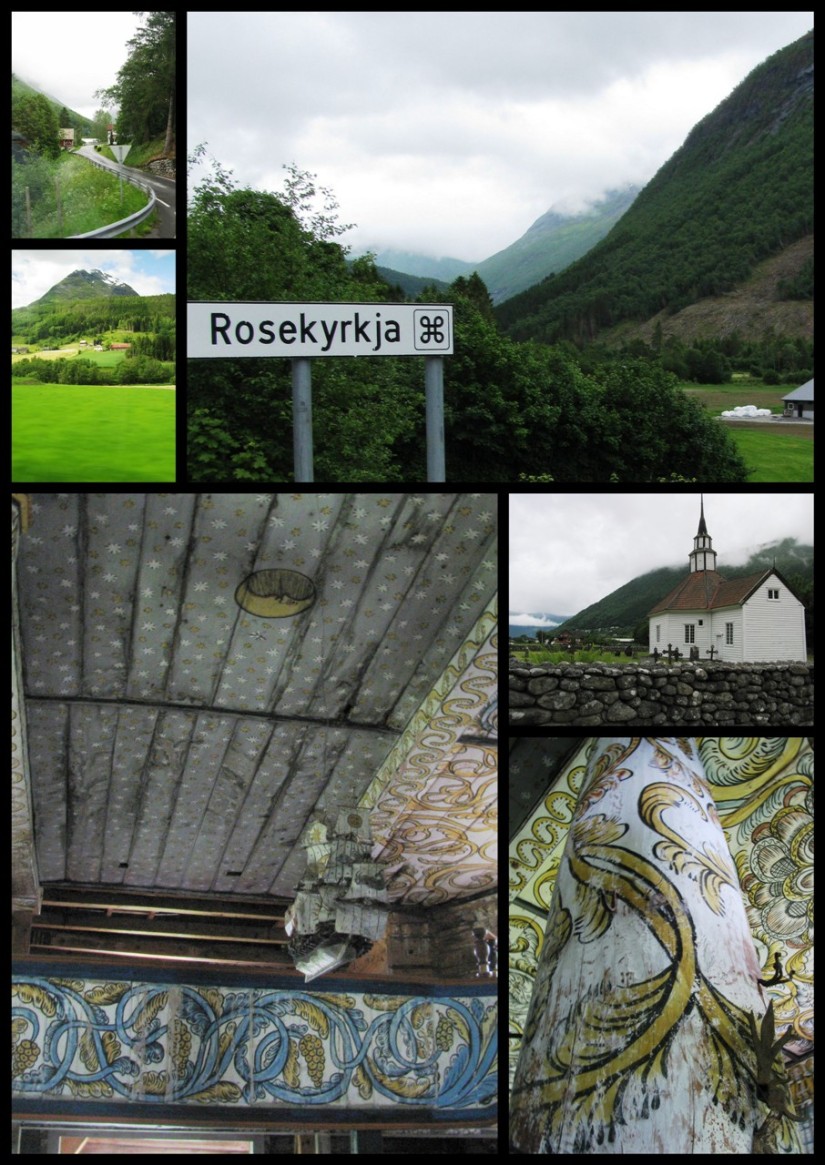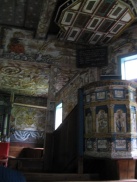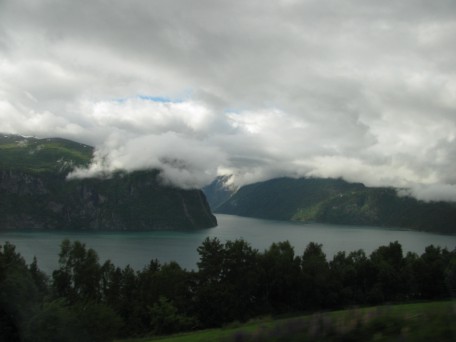Most people have never heard of “Rosemaling” or Rose Painting, but if you ever go to Norway, you will see plenty of it in shops, museums, private homes and most especially, in older churches.
Before technology arrived, Norwegians spent long winters in darkness, so, in order to brighten up the interior of the homes and places of worship, they developed a form of traditional painting that was completely unique. “Rosemaling artists” or Rose painters earned their living travelling through the western fjords of Norway, often times painting in the styles that might have passed out of European fashion 100 years previously. (Such was the isolation of valleys in Norway, decorating trends took this long to filter through). But this isolation is also the reason we still have them to appreciate today.
One of the best examples of Renaissance-Baroque style Rosemaling is found in the Rosekyrkja, or Rose Church, in a little village of Stordal, in the mountains of Møre og Romsdal fylke, Western Norway.

If you drive south through spectacular snow dotted, vertical mountains from Andalsnes, you will find the village of Stordal, where an old stave church stood since the 11th century before it fell into disrepair. In 1789, the village farmers pitched in to build a new church, sourcing local timber to complement the columns and panels they salvaged from the original stave church creating a typical 8-sided church. However, the plain white exterior so typical of the octagonal walled churches belies the artistic feast that awaits you within.
Two artists: Vebjørn Halling and Andreas Reinholdt are responsible for the painting that is all original work and has not been restored since it was first painted in 1799. The ship, hat hooks and candelabra also date back to medieval times and most probably were fixtures in the original stave church. The paintings themselves depict religious motifs such as the twelve apostles, Christ and the foolish virgins, as well as rosemaling scrolls and swirls, intertwined with renaissance and baroque motifs like grapes or pears. In addition, the church altarpiece dates from the 12th century.

As the church has never been heated and sermons were often very long, the community constructed another church in 1908, and quite sensibly reserved this Norwegian art monument for use on special occasions and ceremonies, such as weddings.

No less picturesque than the church, is the drive through the county itself, with Norwegian red barns and farming fields that are so green in spring and summer, they are almost surreal. Stordal is a pleasant drive from the larger town of Andalsnes, (rail network from Oslo). As I passed through spectacular fjords and valleys lined with mountainsides so steep, I felt more like an ant than a fully grown tourist. Stordal Rosekyrkja and its rich history is so unique, it has to be seen to be believed.
http://www.visitstordal.no/rosekyrkja.html
A truly amazing piece of Norwegian art to ponder about.
SHARE a post about your travel at Travel Tuesday from Bonnie Roseblog
GRAB the lovely button above. If you run into trouble, just make sure to mention Bonnie, Camila, Jessi, and Amy in a link!


Great post. The painting style is quite different to the Dutch and Austrian styles. Amazing work. 😀
LikeLiked by 1 person
It certainly does have its own style.Hopefully, my visit can inspire me to produce better art myself.
LikeLike
I never knew about this or even the history behind it because of the darkness and all – thank you for sharing and teaching me something! 🙂
LikeLike
It is my absolute pleasure, Caminioca. I am really glad the story was interesting to you. 🙂 Thanks for visiting me.
LikeLike
NORWAY! So cool. I loved your story!
LikeLiked by 1 person
Thank you, Amy
LikeLike
Great post. It’s fun to see that our paths have crossed (especially when it’s such a tiny place, so far away).
LikeLiked by 1 person
It is nice to think there are fellow wordpress bloggers in the vicinity who are also interested in these old traditions. For me, it was a spectacular attraction, and something so special.
LikeLike
I agree that it was spectacular. I knew nothing about the place and just decided to stop to check it out when we were passing by. I’m glad that we stopped.
LikeLike
Perhaps they should promote the area and its sights more, but where would you start, with incredible nature around every corner in that part of the world. And then, too many tourists might mean the church would deteriorate or become damaged. I like that we had a window into the past, in its very original form. Thanks for you lovely comment and visit.
LikeLike